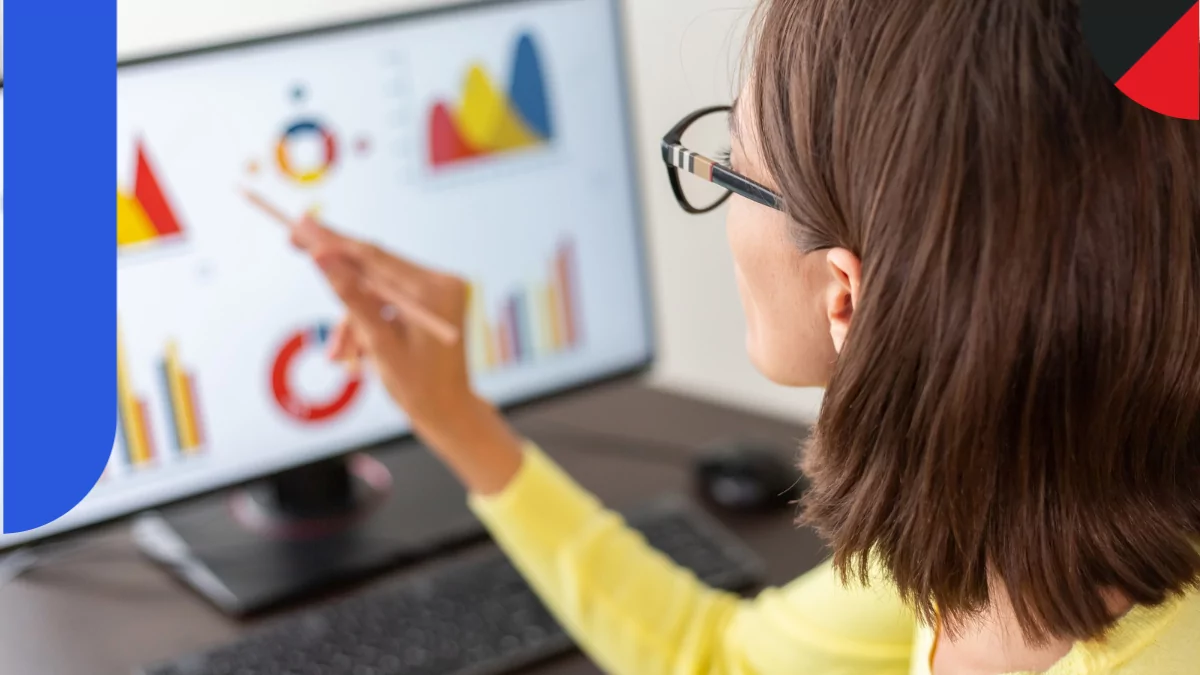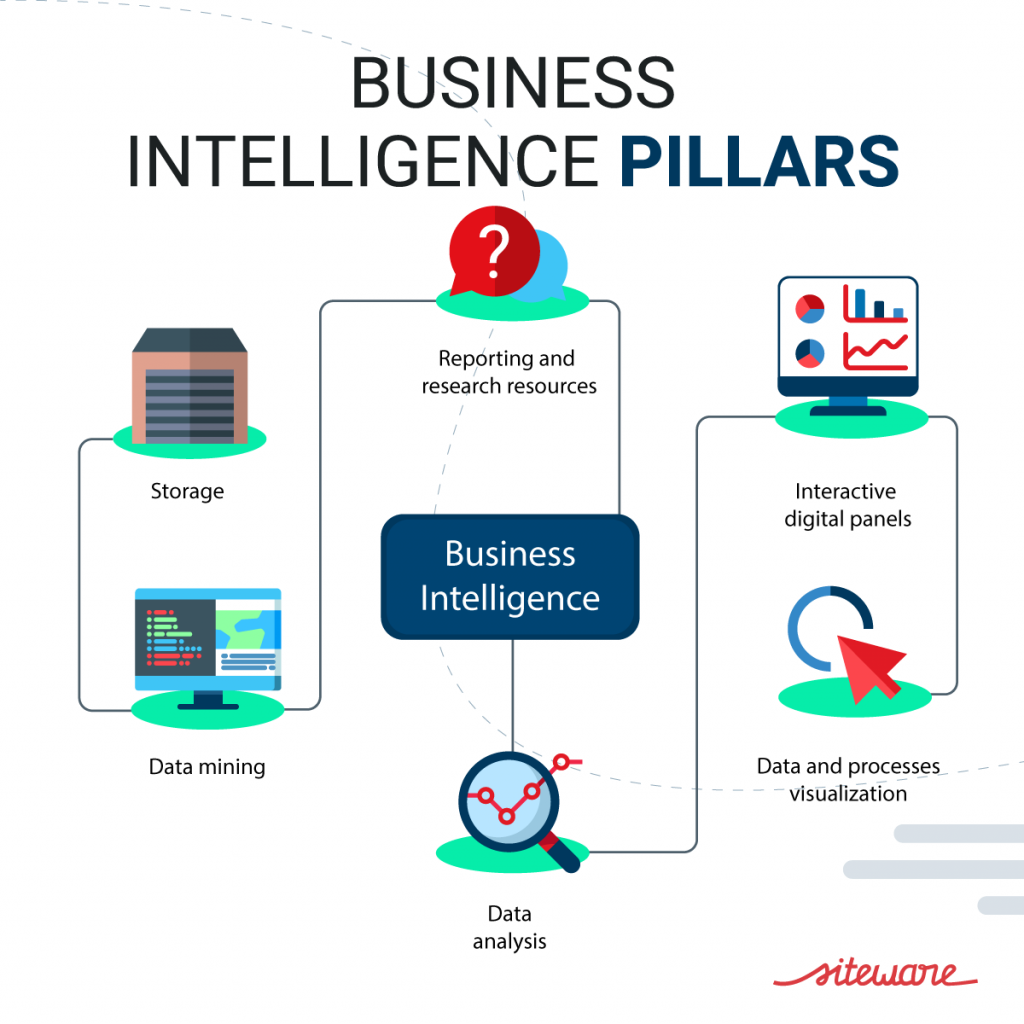
There are several types of statistical analysis that allow you, as a manager, to make the best choices for your business and also perform good risk management.
Through statistical analysis, it is easier to find out if a product or service will be well received in the market (or not). It prevents you from wasting your time investing in solutions that aren’t relevant for the customers or purely based on guesswork.
What is more, through statistical analysis, you can collect, explore and go over data, finding patterns and trends for the future.
In this article, we will show you two types of statistical analysis, as well as several ways to apply them to your business. Have a good read!
A BI platform is essential during the data analysis process. Find out more about the pillars of Business Intelligence:

Statistical analysis is the process of gathering, evaluating and demonstrating data in search of patterns and trends.
Along with technological advances, statistical analysis has evolved and keeps on going further, thus increasing the accuracy in meeting these findings.
Although there are several ways to carry out this type of analysis, in general, they follow five fundamental steps:
Regardless of the chosen method, a statistical analysis will always cover those steps.
There are two types of statistical analysis: descriptive and conclusive. Each of them can be used in different situations within the business environment.
Descriptive analysis is a type of statistical analysis used to summarize the data of a company’s market. As such, it shows information related to an industry segment by the use of maps, charts and tables.
All three elements are primary components in every analysis, and are used to simplify the understanding of raw data and to interpret the market outlook.
However, as the name suggests, it only describes the scenario, not leading to an effective conclusion.
On the other hand, the conclusive analysis is designed to deeply study the found data. To accomplish this, you must ask very specific questions and answer them through an analytical process.
Conclusive analysis allows you to test hypotheses and reach conclusions over the causality of the analyzed factors.
For instance, descriptive analysis can show a certain market population’ profile, but only a conclusive analysis will find the exact reason that leads to a specific behavior.
Given the increase in complexity in data collection and processing in order to use this type of statistical analysis, many managers began to use intelligence softwares to gather the data they want to obtain.
As we said, one of the characteristics of conclusive analysis is to allow managers to test hypotheses and reach a certain conclusion.
In light of this, the conclusions are called statistical propositions and they point out:
To achieve a statistical proposition, you can use several methods. Let’s talk about each of them.
Mean, Mode and Median is a commonly applied type of conclusive analysis, which is calculated using a sample.
It is worth mentioning that the Arithmetic Mean is the best known. In this case, a list of numbers is summed and then divided by the total number of items in the same list.
It is quite useful for defining the overall trend in a data set. However, the isolated analysis of Mean does not say much. To make sense, it is used with a combination of Mode and Median.
The Mode, in turn, is the most frequent value in a data set. That is, it is the number that appeared more frequently within the sample.
Finally, the Median is the central value of that sample. Therefore, it is essential to arrange the value’s list in an ascending or descending order.
The standard deviation is the indicator that shows the degree of dispersion of the data set. It indicates, consequently, if an analyzed set is more or less uniform.
Thus, the closer the standard deviation is to 0, the more the data aligns with the Mean, and the farther from 0, the more disperse it is from the Mean.
In order to calculate SD (the most common abbreviation for standard deviation), you need to subtract all data from the arithmetic Mean and then divide it by the total amount of values.
It is important to note that, like the Mean, in some cases the standard deviation may not provide much information when analyzed by itself. This occurs on an unusual curve, or when the data is very far from the Mean.
Regression is one of the most used types of statistical analysis. It can be divided into three groups:
Simple linear regression is the most used and allows us to understand the relationship between two sets of variables. It is the regression line that shows whether the interrelations of a group of sets is strong or weak.
This is a method often used in scientific research, but in some cases, it may not provide accurate information for the business world. Once the company’s best-selling product outperforms the others, it will be farther from the Mean and applying regression won’t make much sense.
Sampling is the dataset itself. The larger the sample, the more accurate it will be. For example, if you have two thousand customers and you want to launch a new product, by interviewing the two thousand, the data will be more accurate.
However, by interviewing only twenty of them, you will have such a small sample that the standard deviation will tend to be very high, making the results unreliable.
On the other hand, a very high sampling represents higher cost when collecting data. That said, the ideal is to find a sampling amount that offers a reasonable standard deviation to the point of safely showing a trend without causing major financial impacts.
The statistical analysis helps managers to identify attractive business opportunities within their market, especially in times of digital economy. What is more, the different types of statistical analysis point out to different trends that complement each other.
Furthermore, based on past results, the analysis predicts some trends. For this, we emphasize the need for having a good sample. The larger the sample, the more accurate the interpretation of the data and the better your decision-making.
For instance, a statistical analysis can point out if a new feature of a certain digital bank was well received by users, or if it must be redesigned. In addition, it can show certain consumers’ needs that have not yet been resolved.
Now that we’ve talked about the types of statistical analysis, we will show you how your company can develop one step by step.
The first step is to know what you want to obtain from a statistical analysis. After all, nobody collects data with the simple intention of having it.
Consequently, evaluate whether the research aims to find a problem in the product, improve sales strategies, understand a repressed demand or any other objective.
The clearer and more precise this objective is, the easier it will be to decide the questions that will bring out the data.
After establishing the objective, it is necessary to define the sample size. Be careful not to make a mistake here —a larger sample usually increases the cost of a survey.
It must be taken into account that a sample that is too small leads to inaccuracy in data collection, since it increases the standard deviation.
Once the sample size is determined, it is necessary to create closed ended questions so that the result is quantifiable. Otherwise, it will be more difficult to establish parameters to generate results.
Remember that these questions need to meet the objective of the analysis. This will help you to interpret the data more efficiently.
Once the survey has been completed, it must be applied to the selected sample to collect data. This can even be done online.
Keep in mind that the smaller the sample, the faster the process, and the larger the sample, the longer this step will be.
Once you’ve collected all the data, you need to gather it into a database. This can be done using an Excel spreadsheet or a system.
Data compilation alone is not capable of generating significant results. Therefore, after being collected, it is necessary to apply a method for its interpretation.
Linear regression models the associations between dependent variables and expectations in search of predicting unknown values. This regression line will define whether these associations are strong or weak.
This can be done through the scatter plot (also known as scatter diagram), which facilitates the understanding of collected data. Some points outside the curve can be found here.
Do you want to know what the scatter plot is and how to use it in your company? Check out this video 👇
After applying the regression, you will be able to carry out the hypothesis test, known as the t-test. It will help you check the veracity of an association within the selected data set.
The test will show whether the research was done at random, as it reveals any untruth or inconsistency. This type of test is widely used in business management as well as scientific studies.
The data must be described through tables and graphs, just then it can be interpreted.
At this point, you can also apply other elements, such as Mean, Mode, Median and standard deviation to indicate estimates and also confidence and prediction intervals.
Technological advances have allowed greater accuracy in data collection, formatting and interpretation. Therefore, using technology to your advantage makes a big difference when performing statistical analysis.
Statistical analysis helps managers to acquire background when making decisions in the name of a company.
After all, as there are two types of statistical analysis, it is possible to design scenarios, evaluate sales indicators and create conclusive data that support any decision making.
If applied correctly, statistical analysis will help you to discover the product features that your customers value the most, as well as their main pain points and needs.
This is a way to avoid guessing, especially in terms of marketing, and finding opportunities that your competitors haven’t discovered yet.
In some cases, the research only serves to support a test that was already being carried out in your company, while in others, it is used to redraft the entire business strategy, so you can find a better path for growth.
Technology came to improve statistical analysis. A good software collects and gathers data much more efficiently.
Apart from that, an effective data analysis software allows the creation of charts and tables in a much simpler way, and thus empower you to easily visualize scenarios and trends.
In addition, data compilation becomes much faster, which facilitates more complex calculations, such as the linear regression and the standard deviation of a sample.
STRATWs One is a project management software that stands out in the market. By using it, you will be able to connect your strategy to the business operation.
Managers are then capable of extracting and analyzing data more accurately. And even better; in real time and from any device, as the system is cloud based.
In conclusion, for those who want to work with data analysis and support decision making with strong, accurate data, STRATWs One is the best choice. Request a free demo:

Your technology partner to connect you to what really matters.